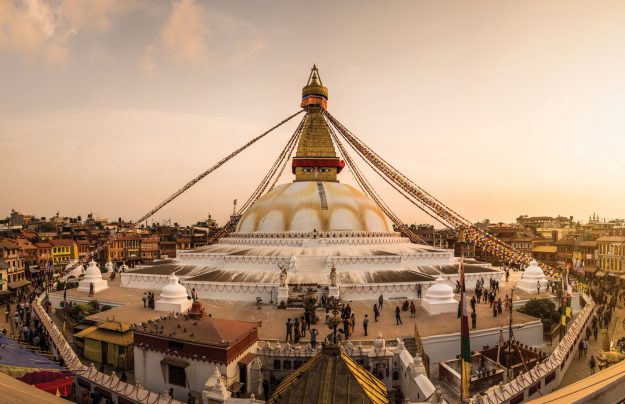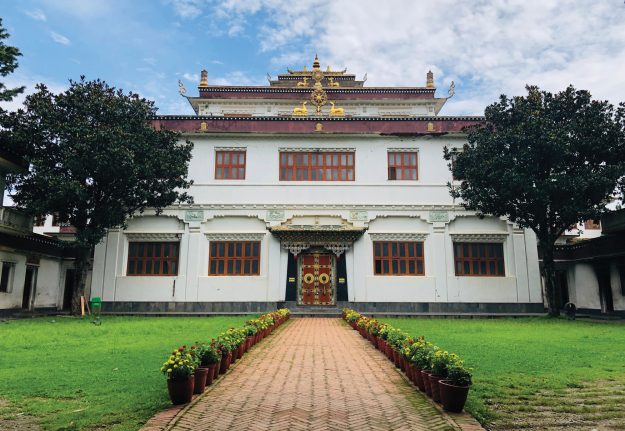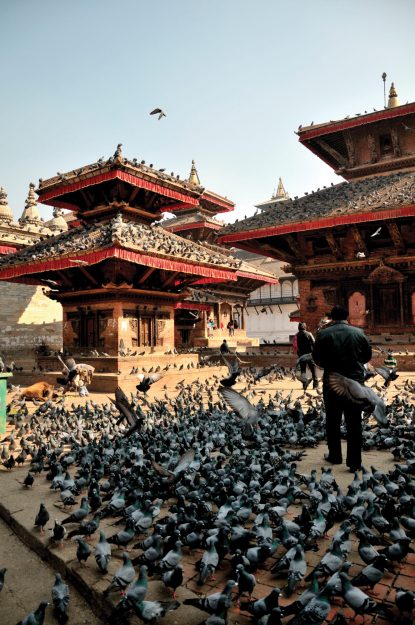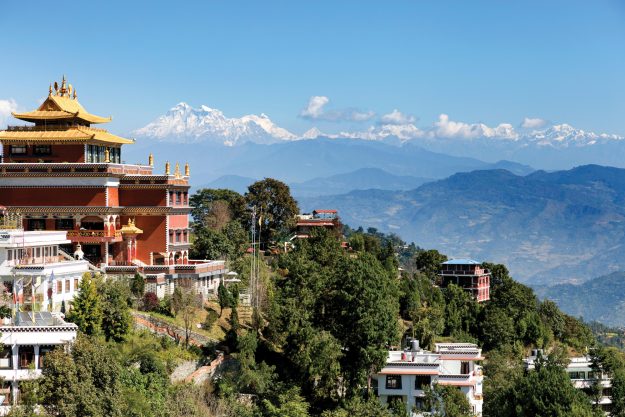Kathmandu is no longer the sleepy Himalayan town it was in the 1970s, when it was a major stop on the Asian hippie trail. Today the Nepali capital is a bustling, chaotic metropolis that welcomes over one million visitors each year. Even if trekking in the Himalayas is what you’re really after, the city’s extensive Buddhist sites are well worth a stopover. Amid the dense urban sprawl are thousands of temples, stupas, and monasteries, along with impressive examples of Newar architecture—historic reminders of the valley’s indigenous inhabitants. (Newar Buddhists still represent one of the major populations in this ethnically and culturally diverse city.) Kathmandu was devastated by a 7.8-magnitude earthquake in 2015, but fortunately most historic landmarks have been part of ongoing rebuilding efforts.
To sightsee in clear weather and breathable air, the best travel windows are October to late November and February to mid-April. (Avoid monsoon season, June to September.) Locals call Nepal’s air “the silent killer,” so just in case, wear a mask to guard against pollution.
1. | Swayambhunath
Swarming with spirited monkeys (and so locally known as Monkey Temple), Swayambhunath is one of Nepal’s most revered pilgrimage sites. Its mythic origin dates back to prehistoric times, when Kathmandu Valley was a lake. Legend has it that the buddha Vipashyin tossed a seed into the lake, giving rise to a lotus flower and a stupa. Enraptured by light emanating from the stupa, the bodhisattva Manjushri sliced his sword through the surrounding hills to drain the lake so devotees could worship there for ages to come.

2. | Boudhanath, the Great Stupa
No less important is Boudhanath, one of the world’s largest circular stupas and, like Swayambhu, a UNESCO World Heritage Site. Located on the outskirts of Kathmandu, Boudha (short for Boudhanath) is a popular residential center for the Tibetan community. Join the pilgrims circumambulating the stupa, lighting butter lamps, and prostrating on boards laid out around its base. Then browse nearby shops for malas, statues, and other ritual objects.
3. | For meditators
Kopan, a hillside Gelug monastery just north of Boudha, gives courses in Tibetan Buddhism, daily dharma talks, and retreats for practitioners in the Tibetan tradition. Established by Lama Yeshe and Lama Zopa Rinpoche, Kopan is famous for its “Discovering Buddhism” retreats that draw participants from around the globe. The guesthouse welcomes private stays of three days or more, and the restaurant has panoramic valley views.

4. | Food for mind and body
In addition to its renowned language courses, Rangjung Yeshe Institute of Buddhist Studies (RYI), which operates out of Chokyi Nyima Rinpoche’s Ka-Nying Shedrub Ling monastery in Boudha, offers free public lectures on Tibetan literature, Newar Buddhism, and Buddhist philosophy. Lectures end around 7 p.m., in time to grab a bite at RYI’s Utpala Café or at Garden Kitchen, another local institution catering to hungry seekers.
RYI, Saraswatinger Road, ryi.org;
Garden Kitchen, Boudha Road

5. | Visit historic Patan
Wander through Patan, ancient epicenter of arts and crafts. The Patan Museum, former residence of Malla kings, is lauded for its collection of Buddhist and Hindu art. At workshops on the top floor you can often find thangka painters in action. Stop for dal bhat (rice and lentils) at the museum’s open-air café, then visit Ratna Jyoti Shakya’s statue shop in the Mahabodhi (“Thousand Buddhas”) Temple courtyard.

6. | A breath of fresh air
A day trip to Namo Buddha, two hours’ drive from Kathmandu, will clear your lungs of the city’s dust-filled air and bring you to another important pilgrimage site in Nepal. The stupa here is said to contain the bones and hair of Prince Mahasattva, one of Shakyamuni Buddha’s former incarnations, who famously practiced the paramita (perfection) of generosity by sacrificing his body to a starving tigress and her cubs.
7. | Homage to the Prajnaparamita
One temple you won’t find in most guidebooks is the 12th-century Tham Bahil, or Bhagawan Bahal, in the district of Thamel. Among the largest Newar temples in the area, Tham Bahil houses four 13th-century volumes of Prajnaparamita sutras, key Mahayana texts traditionally recited by priests only during Gunla, the Newar Buddhist holy month. Now, on request (and for a fee), you can view the precious manuscripts, inscribed in gold and silver ink, anytime.